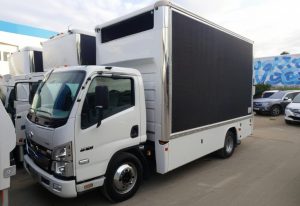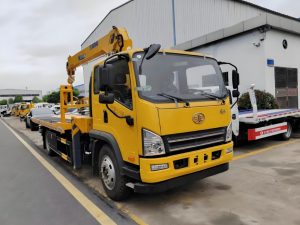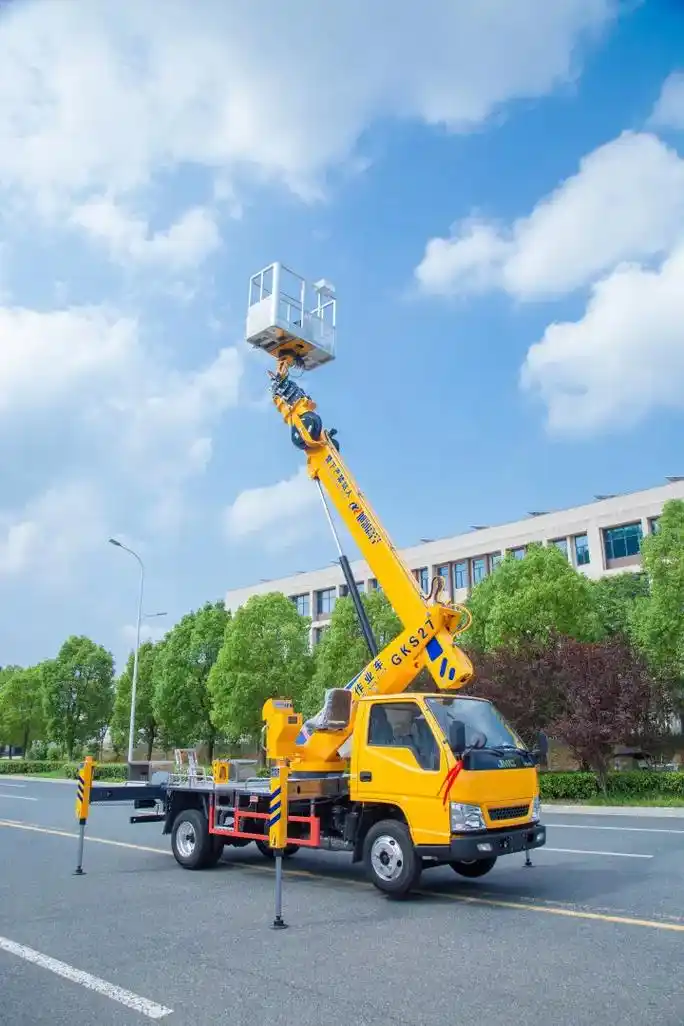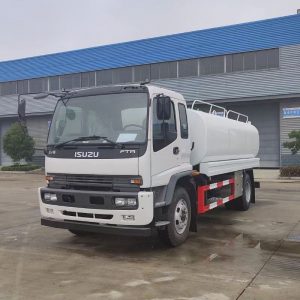Table of Contents
Toggle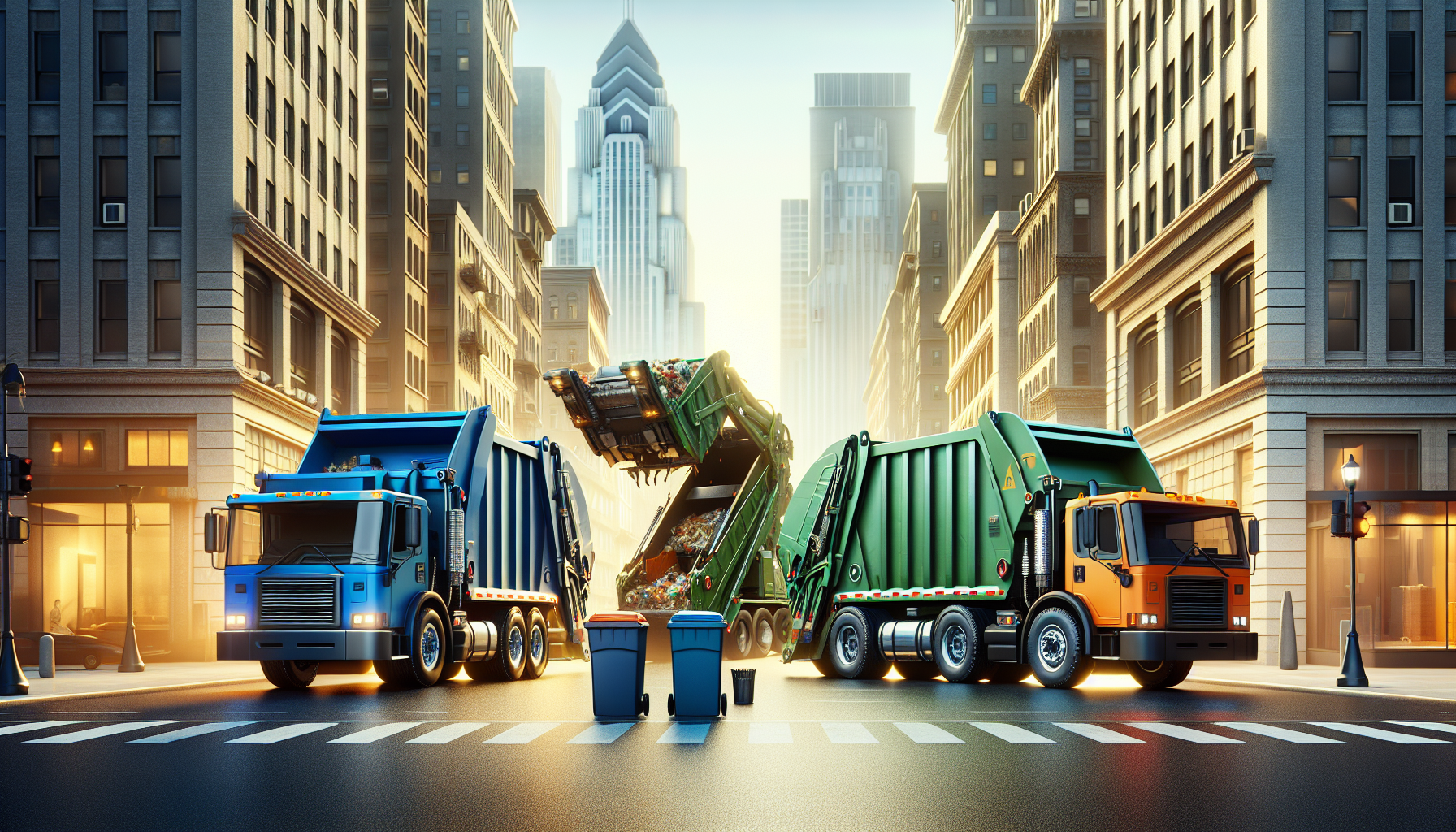
Garbage trucks play a crucial role in maintaining clean and hygienic communities worldwide. These specialized vehicles are the backbone of waste management systems, efficiently collecting and transporting refuse from residential, commercial, and industrial areas. With various types and brands available in the market, choosing the right garbage truck can have a significant impact on operational efficiency and environmental sustainability.
This article aims to provide a comprehensive comparison of the best garbage truck brands in the industry. It will explore different types of garbage trucks, highlight top manufacturers, and discuss key features to consider when making a purchase decision. The analysis will cover front loaders, rear loaders, and side loaders, examining their performance, durability, and technological advancements. Additionally, the article will touch on maintenance requirements and after-sales support, helping readers make informed choices for their waste management needs.
Types of Garbage Trucks
Garbage trucks come in various types, each designed to handle specific waste collection needs efficiently. The four main types of garbage trucks are front loaders, rear loaders, side loaders, and roll-off trucks. Each type has its unique features and applications in waste management.
Front Loaders
Front loader garbage trucks are primarily used for commercial and industrial waste collection. These vehicles are equipped with powerful hydraulic forks at the front, which can lift and empty large waste containers, commonly known as dumpsters in the United States. The process involves the driver aligning the forks with sleeves on the waste container using a joystick or levers. The container is then lifted over the truck’s cab and flipped upside down, emptying its contents into the vehicle’s hopper.
Front loaders have impressive capabilities, with the ability to lift containers weighing up to 8,000 pounds and hold up to 40 cubic yards of trash. This makes them ideal for routes that require strength and high carrying capacity. These trucks are versatile enough to service both commercial dumpsters and smaller plastic carts found in residential areas. However, they require 24 feet of overhead clearance to operate effectively.
Many modern front loader trucks feature “pack-on-the-go hydraulics,” allowing drivers to compact loads while driving. This feature significantly improves route times and overall efficiency.
Rear Loaders
Rear loader garbage trucks are versatile vehicles used for both residential and commercial waste collection. They have an opening at the rear that leads to a trough or hopper, where waste collectors can manually throw trash bags or empty bin contents. Many rear loaders are equipped with lifting mechanisms to automatically empty large carts, reducing the need for manual lifting.
These trucks can typically handle containers up to 2 cubic yards in size, as long as they don’t contain compacted materials. Rear loaders have a capacity ranging from 6 to 35 cubic yards, making them suitable for various workloads. They require 14 feet of overhead clearance to operate and can service more than 800 homes in a single day.
Another popular system for rear loaders involves specially designed containers that fit into a groove on the truck. These containers are emptied using a chain or cable system, allowing the waste to slide directly into the truck’s hopper.
Side Loaders
Side loader garbage trucks are primarily used for residential waste collection. They come in two main varieties: manual and automated. Manual side loaders require workers to physically load trash into the truck’s side-mounted hopper. However, most modern side loaders are automated, featuring a joystick-controlled robotic arm with a claw that can lift and tip wheeled bins into the hopper.
Automated side loaders offer two significant advantages. First, they require only a single employee to operate effectively, reducing labor costs and increasing efficiency. Second, the operator can remain inside the cabin during collection, enhancing safety and reducing physical strain.
These trucks typically require 14 feet of overhead clearance to operate and are particularly effective on residential routes with standardized trash carts.
Roll-Off Trucks
Roll-off trucks are specialized vehicles designed to transport large, open-top containers. They are commonly used for large-scale commercial trash removal, construction sites, demolition projects, and disaster cleanup. The key feature of roll-off trucks is their ability to detach containers from the main body, allowing the truck to leave the container at a site while continuing its route.
These trucks use either a hydraulic arm or cable winch system to load and unload containers. The process involves parking the truck near the container, attaching the cable or hook, and pulling the container onto the truck’s platform. Once secured, the truck can transport the container to a landfill or recycling center.
Roll-off trucks are highly versatile and can handle a wide range of waste types, from household refuse to heavy construction debris. They can carry up to 10 tons of waste at a time and are particularly useful in rural areas where residents bring their waste to centralized locations with portable dumpsters.
Top Garbage Truck Manufacturers
The waste management industry relies heavily on efficient and reliable garbage trucks to keep communities clean. Several manufacturers have established themselves as leaders in this field, offering innovative solutions and high-quality vehicles. Let’s explore some of the top garbage truck manufacturers in the market.
Heil
Heil, a subsidiary of Dover Corporation, has been at the forefront of the waste industry for over a century. Founded in 1901 in Milwaukee, Wisconsin, Heil started as the Heil Rail Joint Welding Co. and has since evolved into a leading manufacturer of garbage and recycling trucks.
Heil’s product line includes a wide variety of garbage truck collection bodies, such as front loaders, automated front loaders, rear loaders, automated side loaders, and multi-compartment rear loaders. The company takes pride in manufacturing all its garbage truck bodies in the United States, with its flagship facility located in Fort Payne, Alabama.
Heil has gained recognition as the chief supplier of refuse and recycling equipment for the New York City Sanitation Department, which is the world’s largest waste collection agency. The company’s commitment to quality is evident in its motto: “Build it right, and then back it with integrity.” This principle has helped Heil maintain its position as an industry leader.
McNeilus
McNeilus, a part of the Oshkosh Corporation, has made a significant impact in the waste management industry with its innovative and reliable refuse trucks. The company offers a range of garbage truck models, including side loaders, front loaders, and rear loaders.
One of McNeilus’ standout products is their side loader garbage trucks, which are highly popular in the industry. These vehicles are designed for flexibility, efficiency, and eco-friendliness. They excel in residential waste collection, featuring zero radius arms that can grab and lift refuse containers even in tight spaces. With an arm reach of six feet and a lift capacity of 500 pounds, McNeilus trucks can efficiently handle garbage cans in crowded residential streets.
McNeilus also offers CNG-powered garbage trucks, which run up to six times cleaner than conventional fuel-based vehicles. These eco-friendly options not only reduce noise pollution but also help save on fuel costs, making them an attractive choice for environmentally conscious operators.
Labrie
Labrie Environmental Group is a top-tier manufacturer of equipment for the solid waste industry in North America. The company’s product lineup includes brands such as Labrie™, Leach™, and Wittke™. Labrie differentiates itself by developing standard-setting technology through innovative design and significant investment in research and development.
Labrie offers a diverse range of garbage truck models, including side loaders, rear loaders, and front loaders. Their products are known for their innovative features, such as the Pendulum Packer, which is ideal for solid and organic waste collection, and the Automizer Right-Hand™, which boasts a strong arm for improved productivity.
The company supports its products through a strong distributor network spanning the United States and Canada. Labrie also operates the U.S-based Labrieplus customer support center and parts center in Oshkosh, WI, ensuring comprehensive after-sales service for their clients.
New Way
New Way Trucks has established itself as a distinguished name in waste management equipment manufacturing. The company is known for its commitment to innovation, quality, and customer satisfaction. New Way offers a range of garbage truck models designed to meet various waste collection needs.
Among New Way’s popular products is the Cobra Rear Loader, known for its impressive compaction capabilities and efficient waste collection. The Sidewinder Automated Side Loader features a unique articulating arm for precise collection in narrow or congested areas. New Way also manufactures the Diamondback Rear Loader, renowned for its durability and versatility.
New Way’s product line caters to a wide array of customers, from small independent operators to large national waste management companies. Their trucks are designed to strike a balance between outstanding compaction and scale house-friendly body weights, making them a popular choice among contractors and fleet managers.
Key Features to Consider
When selecting a garbage truck, several key features demand careful consideration to ensure optimal performance, efficiency, and safety. These features can significantly impact the overall effectiveness of waste management operations.
Capacity
The capacity of a garbage truck plays a crucial role in its efficiency. Different types of trucks offer varying capacities:
- Front loaders can typically hold up to 40 cubic yards of refuse, equivalent to the contents of 8 standard dumpsters. Most late-model front loaders can lift containers weighing up to 8,000 lbs.
- Side loaders have an average capacity of 28 cubic yards, or up to 30,000 pounds of compacted garbage.
- Rear loaders can support 6 to 35 cubic yards of weight, depending on their size.
- Roll-off garbage trucks have a carrying capacity of about 20,000 pounds, or 10 tons.
It’s important to note that maximizing truck capacity is not always practical due to fluctuating set-out weights and the need to distribute customers with longer travel times across multiple routes.
Fuel Efficiency
Fuel efficiency is a critical factor in the operational costs of garbage trucks. Class 8 trucks, which include many garbage trucks, consume more fuel on average than any other vehicle type due to their heavy loads and frequent stops. Refuse trucks are particularly inefficient because of their heavy loads and stop-and-go drive cycles.
The average fuel consumption for a large truck is around 35 liters per 100km driven. However, this can vary significantly based on factors such as:
- Load weight
- Road conditions
- Driving patterns
- Vehicle type and configuration
For example, some truck and trailer units can use around 500 liters in a day’s work, covering about 800 km when fully loaded at 40 to 46 tons gross.
Automation
Automation has revolutionized the waste management industry, enhancing efficiency and safety. Key automation features include:
- Automated side loaders: These trucks use mechanical arms to lift and empty bins, reducing the need for manual labor and speeding up the collection process.
- Joystick controls: Advanced systems like Heil’s Odyssey controls allow drivers to operate the truck with a single, easy-to-use joystick, reducing effort and improving efficiency.
- Smart navigation: Features like Peterbilt’s SmartNav system help drivers navigate more easily over long distances, improving route optimization.
- Pack-on-the-go hydraulics: This feature allows drivers to compact loads while driving, significantly improving route times and overall efficiency.
Safety Features
Safety is paramount in garbage truck operations. Modern trucks come equipped with various safety features:
- Camera systems: Many trucks now deploy cameras inside and outside the cab, providing a 360-degree view to assist the driver with tricky angles.
- Radar detection: Systems like Backsense® Radar Detection alert the driver to moving or stationary obstacles nearby via an in-cab warning.
- AI technology: Advanced systems like Radar Predict use AI to analyze data such as the speed and direction of both the vehicle and cyclists, alerting the driver when an impact is likely.
- Digital video recorders: These offer high-quality recording functionality, protecting drivers and companies in case of incidents.
- Automated safety systems: These include features protecting the driver and the community, which have become standard in modern waste trucks.
By carefully considering these key features – capacity, fuel efficiency, automation, and safety features – waste management companies can select garbage trucks that best suit their operational needs while ensuring efficiency, safety, and environmental responsibility.
Comparing Front Loader Brands
The front loader garbage truck market has several key players, each offering unique features and innovations. This section compares three leading brands: Heil, McNeilus, and Labrie.
Heil Front Loaders
Heil has established itself as a frontrunner in the industry with over 100 years of manufacturing experience. Their flagship model, the Half/Pack front loader, has been a popular choice for more than 50 years. It boasts a capacity of 11 tons within a 28 cubic yard body and features a single axle design for improved maneuverability.
Heil’s front loaders are known for their durability and innovative features. The interlaced subframe provides exceptional strength, ensuring a long lifespan and excellent resale value. The double-walled hopper reduces corrosion, enhancing long-term durability. Heil also employs high tensile strength steel to withstand the forces of the compaction cycle and maximize payloads.
One standout feature is the Odyssey control system, which allows drivers to operate the truck using a single, easy-to-use joystick. This dramatically reduces effort and increases efficiency. The in-cab Insight Display provides real-time feedback and crucial information, improving both operation and maintenance.
McNeilus Front Loaders
McNeilus, a subsidiary of Oshkosh Corporation, has been producing quality vehicles since 1970. They offer a range of front loader models, each with its own strengths.
The Meridian front loader is a lightweight vehicle with a base weight of 17,100 lbs, yet it offers powerful 10,000-pound rated arms and a maximum carry capacity of 14 tons. It’s available in a 40-cubic yard body size, making it suitable for various operational needs.
The Contender model features a 12-cubic yard hopper and offers multiple body sizes ranging from 32 to 43 cubic yards. Its hopper walls and floor are constructed with AR400 steel for added durability.
For heavy-duty applications, the Atlantic Front Loader series offers a 12-cubic yard hopper and arms capable of lifting a maximum of 10,000 lbs. It boasts an impressive compaction force of 118,800 psi.
Labrie Front Loaders
Labrie, established in 1985, has made significant strides in the front loader market. Their Wittke™ series, particularly the Starlight model, stands out for its innovative design and efficiency.
The Starlight is built using 100% lightweight Abrasion Resistant Steel (AR450), which is five times more abrasion-resistant than mild steel. This construction allows for a rugged yet lightweight body, increasing payload capacity without compromising durability.
Labrie’s front loaders are known for their smooth and quick operation. The Starlight boasts a packing cycle of just 18 to 20 seconds and a complete arm cycle of 12 to 14 seconds, significantly enhancing productivity.
To reduce maintenance needs, Labrie uses outboard mounted steel trunnion bearings in place of traditional bushings. When properly lubricated, these bearings are engineered to last the entire lifespan of the unit.
The Starlight also features innovative debris management systems, including a canopy sweeper and a second arm lift to minimize leftover debris. Additionally, Labrie offers proprietary CNG systems and seamless integration with Battery-Electric chassis, catering to the growing demand for alternative energy solutions in waste management.
Rear Loader Brand Comparison
Rear loader garbage trucks are the most recognizable waste hauling vehicles, offering advantages such as ease of maintenance, maneuverability, and versatility. This section compares three leading brands in the rear loader market: Heil, McNeilus, and New Way.
Heil Rear Loaders
Heil, with over a century of experience, has established itself as a leader in the waste industry. Their rear loaders are known for their durability and innovative features. The Heil DuraPack 5000 and PT1100 models stand out in their lineup.
The DuraPack 5000 boasts a compaction rate of 1,000 pounds per cubic yard, making it ideal for long routes and larger items. It features a fully welded and reinforced frame made of high-tensile steel, ensuring resistance to cracking and corrosion. The truck’s 3.94 cubic yard hopper and single-handed manual controls enhance its efficiency.
The PT1100 model offers the fastest cycle time in its class, maximizing collection efficiency. It includes an in-body oil tank that frees up rail space and protects against contamination. Both models feature a three-micron oil filtration system, which is more effective than the industry-standard 10-micron filter, extending the life of hydraulic parts.
Heil’s Powertrak Commercial Plus High-Capacity Rear Loader takes performance a step further with a compaction rate of up to 1,200 pounds per cubic yard and a cycle time as low as 21 seconds. This model excels in handling construction, demolition, and bulk waste.
McNeilus Rear Loaders
McNeilus, with over five decades of experience, offers a range of rear loader models to suit various needs. Their standard rear loader, the 2511 & 2516, is popular for both residential and light commercial routes. It features a three-cubic-yard hopper made of abrasion-resistant steel and a fast 16-second pack cycle time.
The McNeilus Heavy-Duty Rear Loader stands out for its superior compaction strength. It can compact 1,000 pounds of refuse into a three-cubic-yard hopper, making it ideal for lengthy routes and reducing trips to the landfill.
For those seeking versatility, McNeilus offers the Split Body model. With a 40/60 split and independently operating rear doors, this model allows for dual-stream collection, reducing the need for separate trucks for recyclables and waste.
The McNeilus M2 rear loader caters to international carriers looking for a lighter solution. It offers a compact, lighter-weight body design, making it suitable for maneuvering in tight spaces. The M2 features an 18-22 second slide and sweep cycle and a 2.3-cubic-meter hopper built from high-quality abrasion-resistant steel.
New Way Rear Loaders
New Way offers the industry’s widest rear-load lineup, attracting a diverse customer base from small collectors to national haulers. Their range includes models from the nimble 6-cubic-yard Diamondback to the robust 32-cubic-yard King Cobra.
The King Cobra leads the industry in packing power with a compaction rate of 1,100 to 1,300 pounds per cubic yard. Available in body sizes from 20 to 32 cubic yards, it’s built to handle heavy workloads with minimal maintenance.
The Cobra Magnum combines a fast 21-23 second cycle time with a powerful 1,000+ pounds per cubic yard compaction rate in a lighter body than competitors. It’s available in sizes ranging from 20 to 32 cubic yards.
New Way’s latest addition, the Cobra High Compaction (HC), matches the compaction rate and speed of larger models while featuring a lighter body and lower profile. This makes it ideal for height-restricted routes and electric vehicle applications.
The standard Cobra model remains a favorite among contractors, striking a balance between outstanding compaction and a scale-friendly body weight. It features a redesigned fully formed trough and ejection panel for increased structural integrity and easier serviceability.
Side Loader Brand Analysis
Labrie Side Loaders
Labrie has established itself as a leader in the North American waste collection vehicle market. Known for their innovative designs and high-quality manufacturing, Labrie offers a range of side loader models to meet various waste management needs.
The Automizer Right-Hand™ stands out as the most sought-after automated side loader (ASL) in the market. It boasts a strong and precise arm, making it ideal for efficient waste collection. For those seeking versatility, the Automizer Helping-Hand™ combines a high-efficiency straight frame ASL body with a smooth and simple automated arm. This model features a low load sill and a curbside access door for hand-loading, enhancing its flexibility.
Labrie’s Automizer Alley-Hand™ is designed for tight spaces, featuring a stronger Zero Kick-Out arm. This model excels in navigating narrow alleys and reaching distant containers. For maximum versatility, the Expert Helping-Hand™ can handle manual, semi-automated, or fully automated collection.
The company also offers specialized models like the Top Select™ for recycling collection and the Minimax Helping-Hand™, which packs the best features of larger side loaders into a compact, nimble package.
Heil Side Loaders
Heil, with over a century of manufacturing experience, has developed side loaders known for their durability and innovative features. The Heil DuraPack Python Automated Side Loader exemplifies their commitment to quality and efficiency.
Key features of the DuraPack Python include:
- An interlaced subframe for superior resistance to body damage and corrosion
- An automated arm with an 8-second lift cycle, potentially saving up to one hour per day in operating time
- A ShurLock tailgate with reinforced locks for payload security
- An extra-large 5.2-cubic-yard hopper capable of handling containers from 30 to 96 gallons
- Built-in anti-spill features to contain waste and contaminated liquids
- Ergonomic joystick controls for intuitive operation
- A cutting-edge diagnostic display for quick troubleshooting
- Significant lifting power of 800 pounds with continuous operation
McNeilus Side Loaders
McNeilus, a subsidiary of Oshkosh Corporation, offers innovative side loader solutions, with their Zero Radius (ZR) Side Loader being a standout model. This truck is designed for efficiency in densely packed residential routes.
The McNeilus ZR Side Loader features:
- The largest hopper of any side loading truck on the market
- A fast, efficient pack cycle for increased productivity
- The ability to lift garbage cans ranging from 30 to 110 gallons
- Load-sense hydraulics for improved fuel efficiency
- A reach-out arm design that eliminates the need for wide swing-out clearances
- Reinforced cylinders with a patented tool shaver and hardened nitrided rods
- A full-eject body that allows the driver to remain in the cab during unloading
- Electronic operate-at-idle arms for reduced vehicle sway and noise
Available in sizes from 22 to 31 cubic yards, the McNeilus ZR Side Loader offers versatility for various operational needs. Its unique radius design allows for easy navigation of narrow streets, alleyways, and cul-de-sacs, making it ideal for challenging urban environments.
Maintenance and After-Sales Support
Warranty Coverage
Warranties play a crucial role in offsetting the financial risk associated with catastrophic breakdowns in garbage truck fleets. These written guarantees, provided by manufacturers, promise to replace or repair items within a specified period. There are three main types of warranties: basic warranties included with the purchase, no-charge extended warranties that often require specific components or products, and extended warranties available for an additional cost.
Understanding the details of warranty coverage is essential for fleet managers. Many suppliers have personalized their warranties, with some truck OEMs covering major systems or components for up to 60 months or 750,000 miles. Standard warranties typically cover 100% of parts and labor, and some are fully transferable to subsequent vehicle owners.
For fleets with in-house warranty repair capabilities, technician training is vital. Technicians must know which repairs are warrantable, perform efficient diagnostics and repairs, and properly document the process. This includes recording vehicle numbers, repair dates, mileage, and technician information.
Parts Availability
Maintaining a reliable supply of quality parts is crucial for keeping garbage trucks operational. Companies like Wastebuilt offer a wide range of refuse truck parts, from cylinders to replacement wheels for roll-off containers. They stock critical parts inventory from leading brands, ensuring fast shipping for various truck types, including front loaders, side loaders, and rear load garbage trucks.
Genuine OEM (Original Equipment Manufacturer) parts are manufactured to exact specifications on the same production lines as the parts originally installed on the equipment. These parts fit perfectly and are the best choice for performance and reliability. Parts Central, for example, carries an extensive inventory of Genuine OEM Parts covering multiple ESG brands for immediate same-day fulfillment.
Service Network
A robust service network is essential for efficient maintenance and after-sales support. Many manufacturers offer comprehensive support systems to keep garbage trucks running smoothly. For instance, Autocar provides a hotline called Autocar Solutions to help mitigate problems that can’t be resolved in-house.
GPS tracking has significantly impacted maintenance management by providing an automated process to track services fleetwide. Companies like GPS Insight offer solutions that automatically track runtime and odometer readings, sending reminders to managers and drivers when services such as tire rotations, oil changes, and emissions testing are due.
These GPS tracking solutions also enable waste management businesses to remotely monitor vehicle diagnostic trouble codes (DTCs) to assess engine issues in real-time. This proactive approach allows management to address potential problems before they escalate, reducing downtime and maintenance costs.
Some manufacturers, like Autocar, offer built-in maintenance features in their vehicle dashboards. These systems provide mechanics with the ability to monitor issues such as low coolant through diagnostic codes, offering ease of access and improving overall maintenance efficiency.
Conclusion
The garbage truck industry has undergone significant changes, with manufacturers introducing cutting-edge features to boost efficiency and safety. These advancements have a profound impact on waste management operations, enabling companies to streamline their processes and reduce environmental footprints. From automated lifting systems to smart navigation tools, these innovations are reshaping how we handle waste collection and transport.
When choosing a garbage truck, it’s crucial to weigh factors such as capacity, fuel efficiency, automation, and safety features. These elements play a key role in determining the overall performance and cost-effectiveness of a waste management fleet. By carefully considering these aspects and evaluating the offerings of top manufacturers like Heil, McNeilus, and Labrie, waste management companies can make informed decisions to meet their specific operational needs and environmental goals.


